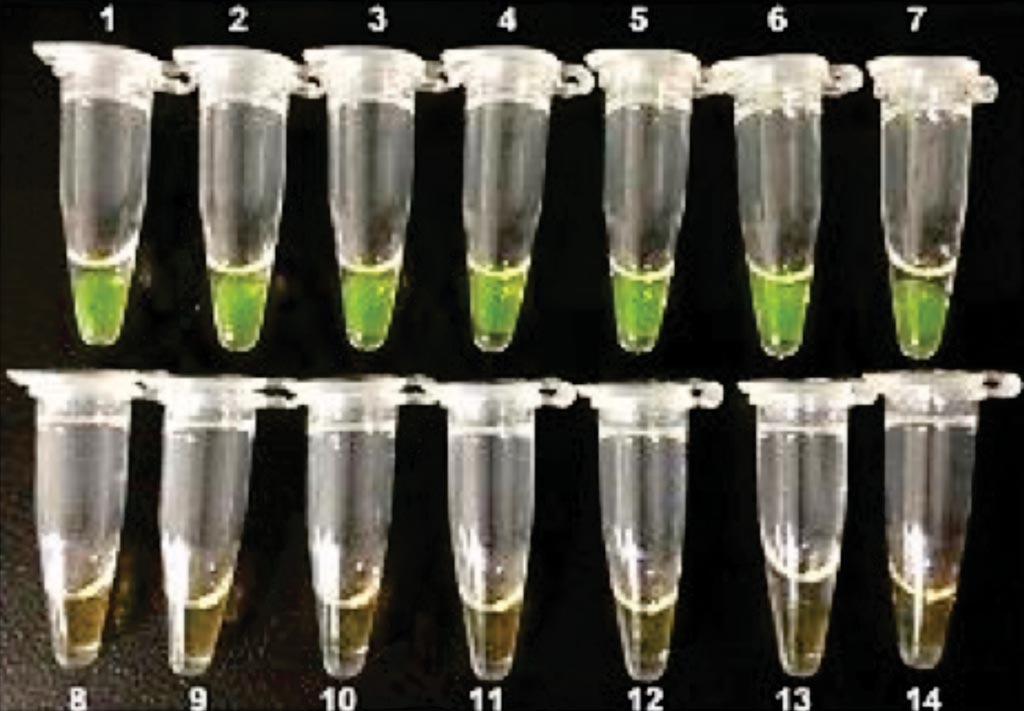Banna Virus Detected by Reverse Transcription-Loop-Mediated Isothermal Amplification
By LabMedica International staff writers
Posted on 26 Dec 2018
Banna virus (BAV) has been isolated from a diverse group of vertebrates and invertebrates, including mosquitos, ticks, midges, cattle, and pigs from different regions in China, Vietnam, and Indonesia. BAV is considered to be an emerging pathogen that can result in human infections with possible manifestation of fever and viral encephalitis.Posted on 26 Dec 2018
Reverse transcription-loop mediated isothermal amplification (RT-LAMP) is a nucleic acid amplification approach that amplifies reverse transcribed DNA from RNA using strand displacement DNA polymerase under isothermal conditions. Due to its rapidness, simplicity, sensitivity and specificity, RT-LAMP has been successfully applied in the detection of various RNA viruses.

Image: Visual detection of RT-LAMP assay. The tubes represent BAV strains and the negative controls used in the visual inspection. 1-7, BAV strains; 8-13, other viruses; 14, negative control (Photo courtesy of Wuhan Institute of Virology).
Scientists at the Wuhan Institute of Virology (Wuhan, China) designed a set of six specific primers to target the segment 12 of BAV, and the reverse transcription-loop mediated isothermal amplification (RT-LAMP) assay was developed and compared with conventional reverse transcription polymerase chain reaction (RT-PCR) method. The team used various cells and spiked samples to test the RT-LAMP method.
In running the RT-LAMP assay, a DEAOU RNA Amplification Kit (RT-LAMP) was used. One step RT-PCR amplification for BAV was performed using Prime Script One Step RT-PCR Kit Ver.2. RNA was extracted from 140 μL of BAV-infected C6/36 cell culture supernatant, BAV-spiked human serum or filtered mosquito homogenate samples using the QIAamp Viral RNA Mini Kit.
The team reported that the amplification of the RT-LAMP assay can be obtained within 40 minutes at 65 °C. The results from specificity showed that only target BAVs RNA including genotypes A, B and C were amplified and the assay demonstrated a sensitivity of 3.6 × 10−2 PFU/mL, which was higher than conventional RT-PCR measurement. A good reliability for the assay was presented in the further evaluation for BAVs RNA from serial diluted BAV-spiked serum and 47 pools of field mosquito samples.
The authors concluded that they had successfully developed a RT-LAMP assay for the detection of BAV, which provides a potential new molecular diagnostic test for BAV that could be applied in the field or clinic in the future, and that may contribute to the preparedness for future outbreaks of a BAV endemic, especially for regions with limited resources available. The study was published online on November 2, 2018, in the International Journal of Infectious Diseases.
Related Links:
Wuhan Institute of Virology














